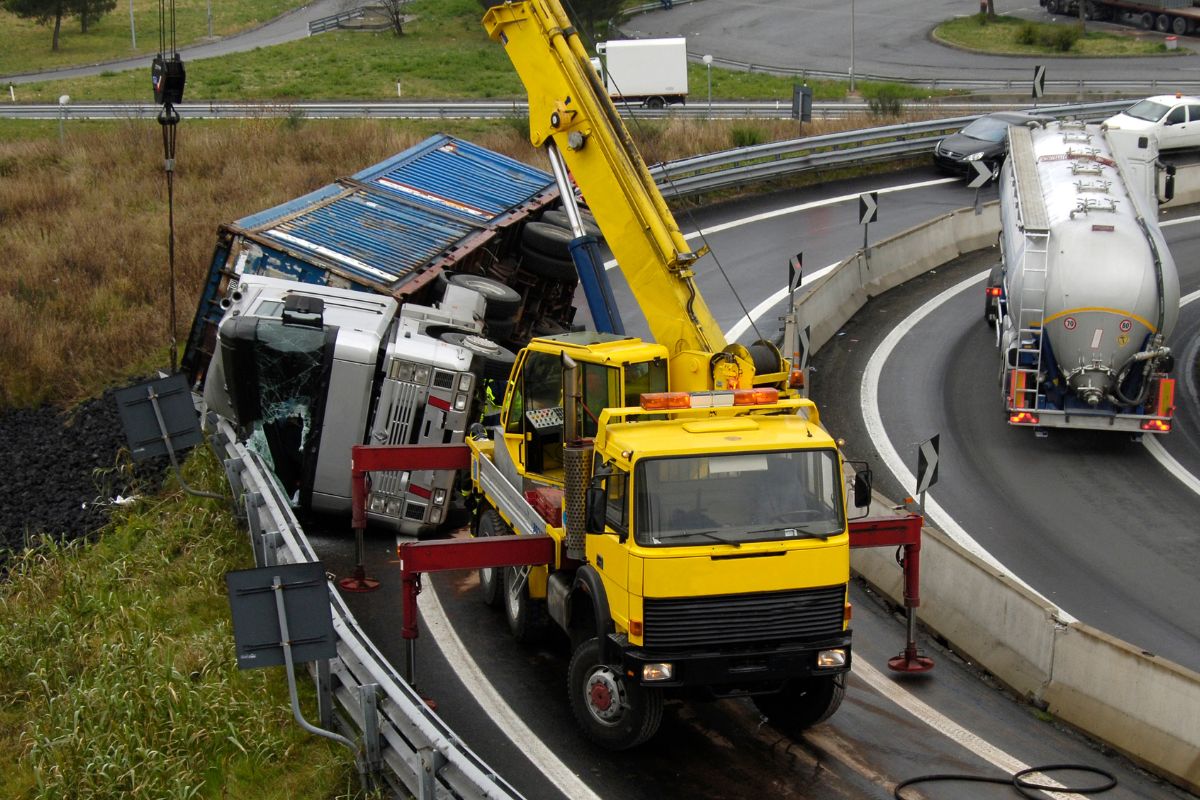Trucking Companies With the Most Accident Lawsuits Await New Safety Standards

New research pointing towards accidents and safety features and regulations by commercial trucks paints a concerning picture: Accidents, mishappenings and fatalities involving large trucks are rising, personal injury lawsuits are rising against major trucking companies and manufacturers and industry experts are calling for broader and expanded adoption of advanced driver assistance systems (ADAS) to address systemic safety failures.
The National Highway Traffic Safety Administration’s (NHTSA) Large Trucks Traffic Safety Facts 2022 states that 5,936 people died in major traffic accidents which involved large trucks in 2022. As compared to the fatalities that happened in 2021, the year 2022 represents a 2% increase in terms of accidents involving large trucks highlighting the growing need for urgent interference and rectifications in the trucking industry.
As we research more into the fatality statistics and data, it reveals that more than 70% of people who were killed in these large truck incidents and crashes were the riders and occupants of other vehicles, showcasing the deadly and high impact these vehicles can have on road safety.
The data also reveals that around 76% of these deadly crashes and mishappenings take place on weekdays, indicating the risks associated and involved with the heavy volume of weekday commercial traffic. The consistent increasing trend in fatalities has gained increased scrutiny, leading to legal, regulatory, and technological responses to reverse the trajectory.
Table of Contents
ToggleLegal Trends and Company Accountability
In response to these developments, Gruber Law Offices conducted a comprehensive legal data analysis to identify the trucking companies most frequently involved in personal injury lawsuits. Their findings highlight the increasing legal exposure for industry giants. The top three companies facing the highest number of personal injury claims are:
- Swift Trucking – 299 lawsuits
- Werner Enterprises – 289 lawsuits
- Schneider National Carriers – 154 lawsuits
These numbers and data shed light on the emerging concerns over the safety procurements, standards and even operational and technological practices of some of the country’s biggest freight companies and carriers. As these lawsuits accumulate, so do the financial and reputational pressures on the companies involved.
Common Causes Of Truck Accidents
In a number of cases, the main reason for major truck mishappenings and crashes are the same. Technological failure, mechanical failure, weather conditions, disproportionally loaded cargo, speeding, driver fatigue and distracted driving are some of the main causes for truck fatalities. Even with current federal regulations, these problems still lead to high death rates and lawsuits.
Regulatory Measures And The Role Of FMCSA
The Federal Motor Carrier Safety (FMCSA) governs commercial vehicle safety, which has long enforced rules to prevent risky behavior. The upcoming patterns and measures implicate that only sticking to rules and regulations is not sufficient. These incidents lead to diverting the focus on utilizing cutting-edge technologies that can improve safety results in real time.
Tech-Celerate Now Initiative
One of the major initiatives is the Tech-Celerate Now program. This program and initiative promotes the use of tech-forward safety solutions within the commercial trucking industry. The main aim of this programme is to increase compliance with safety protocols by encouraging the integration of advanced driver assistance systems into fleet operations. These systems include features like:
- Automatic Emergency Braking (AEB)
- Lane Departure Warning (LDW)
- Electronic Logging Devices (ELDs)
When properly enforced, the technologies mentioned above can potentially minimize accidents and fatalities. For instance, the ELDs technology helps ensure compliance with federal hours-of-service rules, which minimizes the risk of incidents as a result of fatigue. On the other hand, AEB and LDW systems provide drivers with real-time alerts and automated responses, which can prevent crashes before they tend to occur.
Additional Safety Innovations
The HDT Factbook 2023 emphasizes the importance of driver competency and attentiveness as another key element in accident prevention. In addition to ADAS, the industry is beginning to explore a suite of supplementary tools such as:
- Electronic Onboard Trip Recorders (EOTRs)
- Vision Enhancement Systems
- Driver Fatigue Monitoring Technologies
These innovations will likely become central to future compliance protocols and may soon be mandated under stricter FMCSA guidelines.
Future Outlook And Industry Recommendations
The FMCSA is also planning to impose stricter charges and penalties for the companies which are found to be non-compliant with safety standards and measures. This will further help boost safety measures. Proposed measures include downgraded safety ratings, which could significantly affect a carrier’s ability to retain clients and remain competitive.
The increasing fatalities and concerning figures are causing major changes in the legalities and regulatory discussions related to commercial trucking. Legal Professionals, technology experts, policymakers and fleet operators are among the major industry stakeholders who concede that immediate and decisive action is important.
There is increasing agreement that the commercial trucking industry needs to adopt a proactive, tech-driven safety culture in order to go beyond simple compliance, as lawsuits and fatalities continue to rise. Failing to do so puts the lives of innumerable drivers, passengers, and professional drivers who share America’s roads in jeopardy in addition to increasing the likelihood of additional legal repercussions.
Published by Chloe Jhonson
With over 5 years of experience in content creation, I specialize in crafting engaging posts across various topics — from fashion, lifestyle, business & tech. Join me as I share insights & ideas to inspire your journey! View more posts







